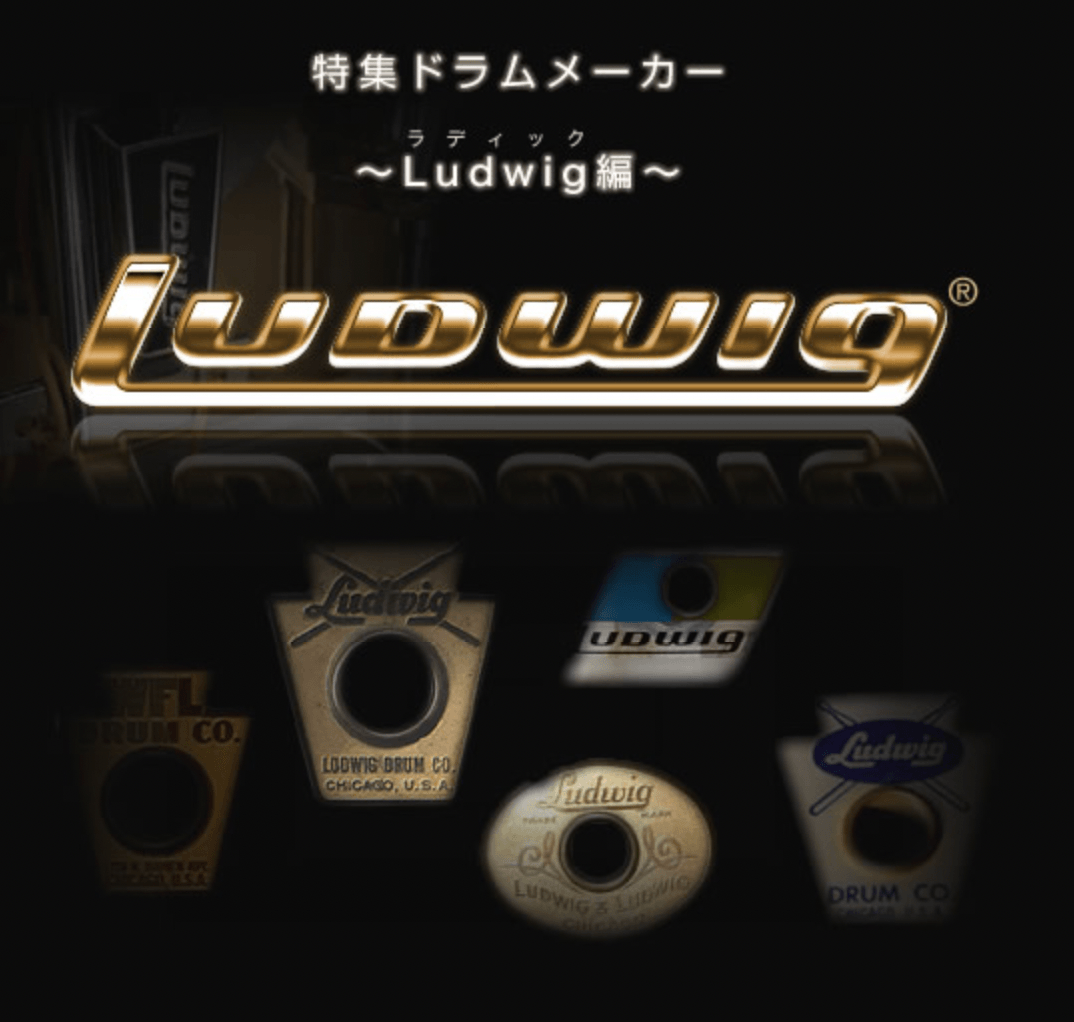
"Ludwig " This brand is a dream for many drummers, isn't it?

With its unmatched precision, superb technique, and exquisite groove, it has influenced not only jazz fans but also many drummers.Buddy Rich. ( Buddy Rich ). His individuality shines through in his simple drumming, and he continued to support the legendary band "The Beatles," which even became a major social phenomenon.Ringo Starr ( Ringo Starr ).
He established the two-bass specification and heavy drumming in the rock sound that was becoming louder and louder.Carmine Apis ( Carmine Appice ). He was a member of the legendary rock band "Led Zeppelin" and continued to influence many drummers even after his death at a young age.John Bonham ( John Bonham ).
In an era when staging was a glamorous show, "Van Halen" attracted many fans with its performance backed by solid musical skills.Alex Van Halen ( Alex Van Halen ) etc...
Ludwig has been used by many star players, and their heroic figures (along with their wonderful performances) may be etched in the memories of many fans. Ludwig van der Linden is one of the most famous drum makers in the world. Let us take a closer look at this giant of the drum world, "Ludwig".

Founder William F. Ludwig(1879-1973)

William F. Ludwig was born near the Rhine River in Germany in 1879. He moved with his parents to Chicago, U.S.A. when he was 8 years old. His father was a professional musician (valve trombone/baritone player). In this environment, William grew up to be a natural performer. Of the many instruments available to him, he chose the "Drum". After learning drumming, he became a percussionist (he also worked as a timpani player in addition to drummer).
While working with various bands in theaters (operas, musicals) and dance halls, a turning point came. He saw a drummer in a band using an all-metal shell snare (made in Europe with separate tension), which was rare in those days. William was shocked to see a drum he had never seen before. The tone and power of the drum left an indelible mark on him that he would never forget (he would actually go on to build a separate tension all-metal shell snare a few years later). ) He later described this event as "a turning point in my life.
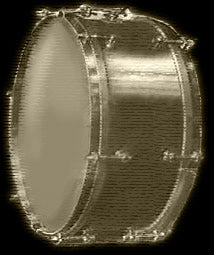
William was working with a band that had two drummers (a bass drummer and a snare drum/cymbal player), but William was playing two parts on his own. The bass drummer needed to use a pedal to play the bass drum. Pedals already existed at the time, but they were cumbersome and had problems with power and speed. So William built a pedal through a process of trial and error. William had a younger brother "Theobald" who was a drummer at the time.
William and his brother "Theobald", who was a drummer at the time, worked together to produce pedals in between their playing jobs. They opened a small drum store "Ludwig & Ludwig" in an old building. This is the start of Ludwig, which is used by many players today.

The tumultuous 1920s to 1950s
Ludwig has experienced ups and downs in its long history, even though it has now established an unshakeable position in the industry.
Let's take a look at the period up to the 1950s, which was particularly tumultuous.
|
1909 |
Ludwig & Ludwig" is founded by Wiliam and Theobold. |
|
|
|
|
1929- 1930 |
The company is sold to C.G. Conn in order to keep the company afloat, due to a combination of falling stock prices and the need to borrow money for the construction of new buildings. |
|
1937 |
At the age of 58, William decided to take another shot at the drum making business and established a new company, "Wm. |
|
1939 |
The company name is changed to "WFL". |
|
|
|
|
1951 |
C.G.Conn merges its two companies, "Leedy" and "Ludwig and Ludwig", to form "Leedy and Ludwig". |
|
|
|
|
1955 |
William buys back the "Ludwig" name from C.G.Conn. The company makes a new start as "Ludwig Drum Company. |
|
|
|
Ludwig has continued to produce excellent drums through twists and turns, and thanks to this, the number of players who use Ludwig drums increases. The Ludwig drums were also used in the 1950's and 1960's.

Players fascinated by Ludwig drums
As you know, there are countless players who have loved Ludwig drums. As we mentioned at the beginning of this article, there are many players who have been fascinated by Ludwig drums.Buddy Rich ( Buddy Rich ), Ringo Starr ( Ringo Starr ), Carmine Appice ( Carmine Appice ) andJohn Bonham ( John Bonham ),Alex Van Halen ( Alex Van Halen ), Roger Taylor ( Roger Taylar - Queen ), Joey Kramer - Aerosmith ), Bunny Carlos ( Bun E.Carlos - cheap Trick ), Eric Carr ( Eric Carr - Kiss ), Nick Mason (Pink Floyd ), Alan White (Alan White - yes ), Rick Allen (Rick Allen - Def Leppard ), and many others.
Here we would like to introduce some of the many Ludwig users.
Ginger Baker - Cream
Coming from a jazz drummer background, Ginger originally used a simple 3-piece set. However, when he formed the legendary band "Cream" with Jack Bruce and Eric Clapton, he switched to using a Raddick 2-bass set. The set consisted of two different sized basses (20" and 24"), 16" and 18" floor toms, and 12" and 13" toms. The toms are set almost horizontally, which is a unique setup. As a jazz drummer, he has performed excellent improvisation in live performances, which can be seen in the live recordings of Cream. I also recommend "LIVE CREAM Volume 2," which was released after the breakup of the band.
Don Henley - EAGLES
The Eagles are famous for their melancholy melodies and beautiful choruses. Don Henley, the drummer and vocalist of the Eagles, was one of Ludwig's favorite players. He played great vocals and drumming on songs such as "Hotel California," and used a Ludwig single head set with a timbales (BD22", FT16", TT16", TT16" or 15", 14", 13", 12" + timbales). The unique deep tone on heavy songs and the light drumming on country tunes are impressive. In a documentary program on the Eagles, they once said that they were very much inspired by the Beatles to form the band. Glenn Frey and Don Henley were chosen to play the role of Lennon and McCartney, and all the members had to be able to sing. If you ask me, the four members of the band at the time of their debut were like an American version of the Beatles. If you are listening to Don Henley for the first time, I recommend the albums "The Cursed Night" and "Hotel California".
Ringo Starr - The Beatles
He is probably one of the people who made Ludwig most well known to the world. The Black Oyster Pearl set that he used so much is still a gem of drummers (all over the world). Early set / BD20", FT14", TT12", SD14", Cymbals(Zildjian) RD20" CR18" HH14" ~ Middle BD22", FT16", TT13", SD14", Cymbals(Zildjian) RD20" CR18" HH14" (or 15"), and Many fans may be interested in the differences between the later BD22", FT16", TT13", TT12", and SD14" in natural maple, and cymbals (Zildjian) RD20" CR18" HH14" (or 15"), etc., depending on the period. His playing is simple, yet unique, and even if you listen to it now, it still sounds fresh and new. I don't think there are many people who have never heard of him. If you are a young person who has only heard them on TV as background music, please pick up any of their albums (I recommend all Beatles albums).
Jhon Bonham - Led Zeppelin
Even after his death at a young age, Jhon Bonham continued to be a legend and a major influence (on future drummers). There is an anecdote that he started using the Ruddick drums, which are synonymous with him, after being introduced to them by Carmine Appice, who had originally used them. Bonzo has many episodes of being a dynamic player, but his playing is also dynamic, as is his character (although there is of course some delicate playing as well...). The set he used was a powerful one consisting of a 26" bass drum. From '69 to '73, natural maple (BD26", FT18", 16", TT15") and covering maple (BD26", FT18", 16", TT14") were used, and after '73, amber-colored vista light (BD26", FT20", 18", 16", TT14") was used. From '77 onward, he also used stainless steel (BD26", FT18", 16", TT15"). He also used a snare, LM402, which is very popular in our store (the secret of its popularity is also due to Bonzo's influence). It is not so difficult to recommend a Led Zeppelin album, but if we focus on Bonzo's drumming, it would be the 7th album "Presence" released in 1976. The opening number, "Achilles' Last Battle," is over 10 minutes long and features some of the most powerful drumming ever on a Bonzo album. Please check it out.
Steve Jordan ( Steve Jordan )
Steve Jordan is a multi-talented drummer who embodies the world's best grooves and is also active as a producer (his productions have won Grammy Awards! ), he is a multi-talented person. He has played with and is trusted by many artists, including the Rolling Stones, Eric Clapton, Bob Duran, BB King ~ Sheryl Crow, John Mayer, and many more. He is known as a Yamaha drum user, but he also uses Ludwig drums, including a 1963 Black Oyster set (Ringo Starr's influence!?). ), which he uses for recording and other purposes. ( His playing can be heard in many of his works. ) In recent years, The Verbs "And Now..." ). If you are interested, please check out the following page.
Ludwig has attracted many other drummers, and since so many players use Ludwig, we have only introduced a few of them. Your favorite drummer may be using a Vintage Ludwig for recording. If you are interested in it, why don't you pursue it?
Introducing some of Ludwig's finest products

Pedals

~Speed King
This pedal was introduced in 1938 as the Twin Spring Speed King Pedal, and has been a long-selling product as the face of the company.
The Final Version and after, there have been almost no specification changes, and we are amazed at the high level of perfection at that time.
This is The Final Version from the 50's WFL period. 
Vintage Speed King, which is still highly valued even now.
Snare
~One of Ludwig's most famous snare "Black Beauty".
One of Ludwig's flagship models since the 1920s, this snare is a gem of black-nickel-treated brass shell.
The gold parts and elaborate carvings make this a very impressive model.
This is a 1920s Black Beauty with beautiful decorations called Ocean Wave Patterns.
This is a Black Beauty from the 20's with the 12-Leaf Patterns pattern. 
This is a Black Beauty from the 29's or early 30's with the 6-Leaf Patterns pattern. 
~Universal Model
This is a simple 6 Lug Metal Shell Snare with a history of Ludwig. It is a snare with good sound and has a strong fan base.
The ones before the sale to C.G. Conn are especially popular because of the weight (thickness) of the shell.
This is a Universal Model from the 1920s.
This is a Universal Model from the 1920s. This is a Universal Model from 1920's. It was made in Chicago factory and CHICAGO can be seen on the engraving.
This is a Universal Model from 1930s. This model was sold to C.G. Conn.
This is 1930's Universal Model.
~This model was sold to C.G. Conn Co.
This is one of Ludwig's representative models, SUPRAPHONIC LM400. It is a long-selling model that continues to this day. From about 1955 to 1960, Ludwig used Brass as the shell material, and there were Chrome-Plated and Lacquered versions (both with Brass Shell). Ludwig's original Radialoy (an alloy mainly made of aluminum) was used for the shell material from around 1961. The shell material is different from the current model, so it would be interesting to have a different model for each year. The size is 14 "x5".
This is a 1966 LM400.
This is LM400 of 1970. ~UNNUMBERED~ (in Japanese)
This is 1976 LM400.
This is LM400 around 78-79.
~SUPRAPHONIC LM402~.
This is the SUPRAPHONIC LM402, another well-known snare, which was used by three famous rock drummers, John Bonham, Cozy Powell, and Ian Paice, and is still very popular today. The shell material is the same as that of LM400. The shell material is the same as LM400, Radialoy was used from 60's to 80's. The recent models also have their own merits, and it would be interesting to have them in different age groups. The size is 14" x 6.5".
This is LM402, circa 1978-1979.
This is LM402 from the 1980s.
This is Supraphonic by Bronz Shell.
This is a rare item from the 1980's that rarely comes in stock.
~Acrolite LM404~.
Acrolite LM404 is a long-selling model that has been on the market since 1963. As the name suggests, the shell material is made of aluminum. It has a warm tone and is one of our most popular models. The size is 14" x 5". The 6,5" model LM405, which is a different size, has been available (in the catalog) since 1994.
This is LM404 from 1967.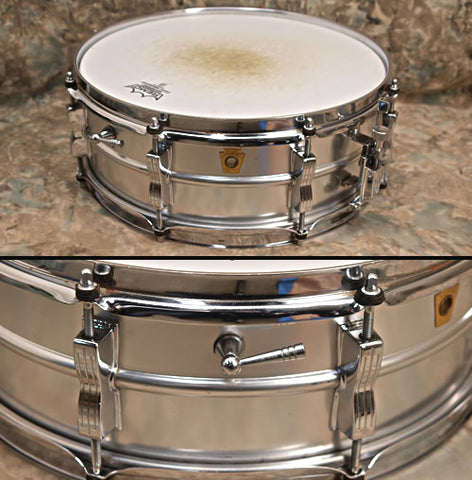
Here is LM404 from 1976.
This is LM404 in 1980's.
~Super Sensitive LM410
LM410 is a snappy full-sided version of LM400 Series.
This LM410 is made around 1961-1962. The shell is Chrome-Plated Brass.

This is LM410 from 70's.
~Super Sensitive LM411 ~.
This is LM411, a snappy full-sided version of LM402.
This is a model from the 1970s.
This is a model from the 80's.
~ Vistalite ~~ Vistalite ~~ Vistalite ~~ Vistalite ~~ Vistalite
The Vistalite Series appeared in 1972, using acrylic for the shell, which allowed for a relatively wide range of colors, including Clear, Yellow, Amber, Red, Blue, Green, Rainbow, Solid White, Solid Black, Smoky (Dark Gray), Tivoli (with electric lights), and many other variations have appeared. Many players used them in their live performances because of their high visual element and stage appeal. Among them was John Bonham. If you have never seen them, please check them out on You Tube.
This is from the 70's.





~Pioneer
This Pioneer was manufactured from 1960 to 1974. The shell is 3ply construction of mahogany, poplar, and mahogany (from 1968, 3ply specification of maple, poplar, and maple also appeared). 6 lug specification, available in 14 "x5" and 14 "x6.5" sizes.
This is a 1967 Pioneer.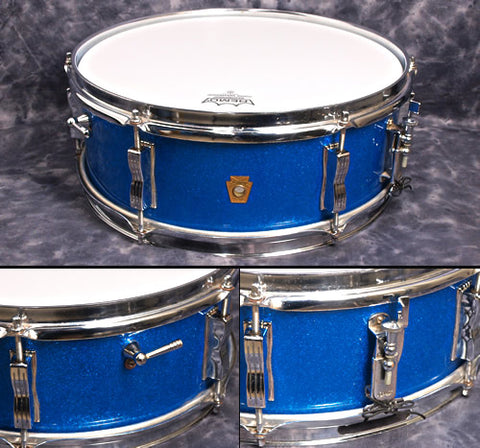
This is a 1966 Pioneer. ~Black Oyster
~Barrett Deems / Jazz Festival
This is a gem that was produced from 1956 to 1970. It was originally called Barrett Deems, but from 1960 it was called Jazz Festival. It is also made of mahogany-poplar-mahogany 3ply construction (from September-October 1968, maple-poplar-maple 3ply specification also appeared), with Reinforcement specification. It is a 6 lug specification and the size is 14" x 5.5". This Vintage Snare is very popular in our store.
This is a Barrett Deems from 1958. Some parts from WFL era are used, and you can see the engraving on the strainer.

This is Jazz Festival 1961.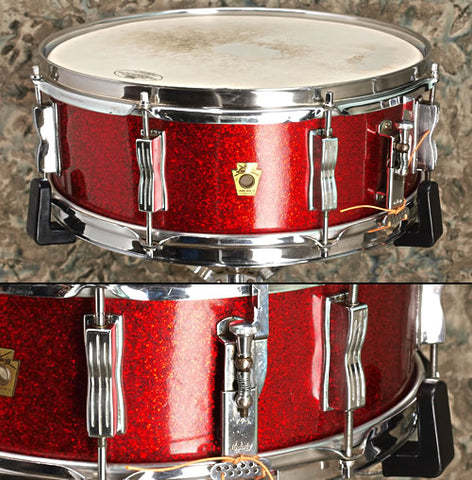
This is a 1962 Jazz Festival.
This is the 1967 Jazz Festival.
This is the 1968 Jazz Festival.
The shell is 3ply mahogany, poplar, and mahogany.
~Down Beat
Down Beat was manufactured from 1960 to 1970. Like other Wood Snare models, this one has a 3-ply mahogany-poplar-mahogany construction (from September-October 1968, a 3-ply maple-poplar-maple specification also appeared). The size is 14 "x4". This is a rare gem with few in stock.
This is a Down Beat from 1963.
This is also a 1963 Down Beat.

